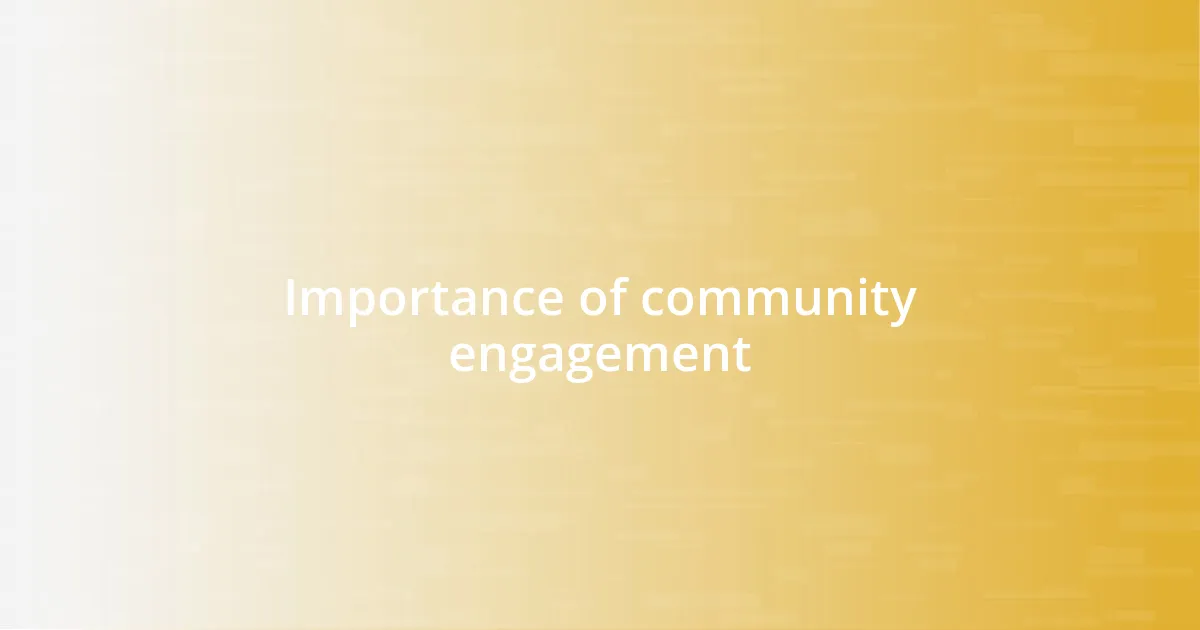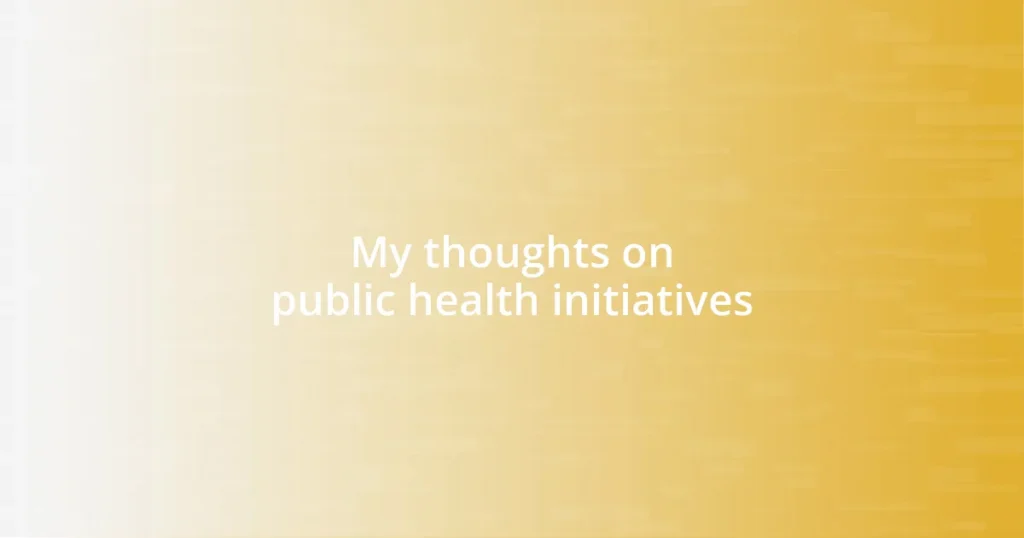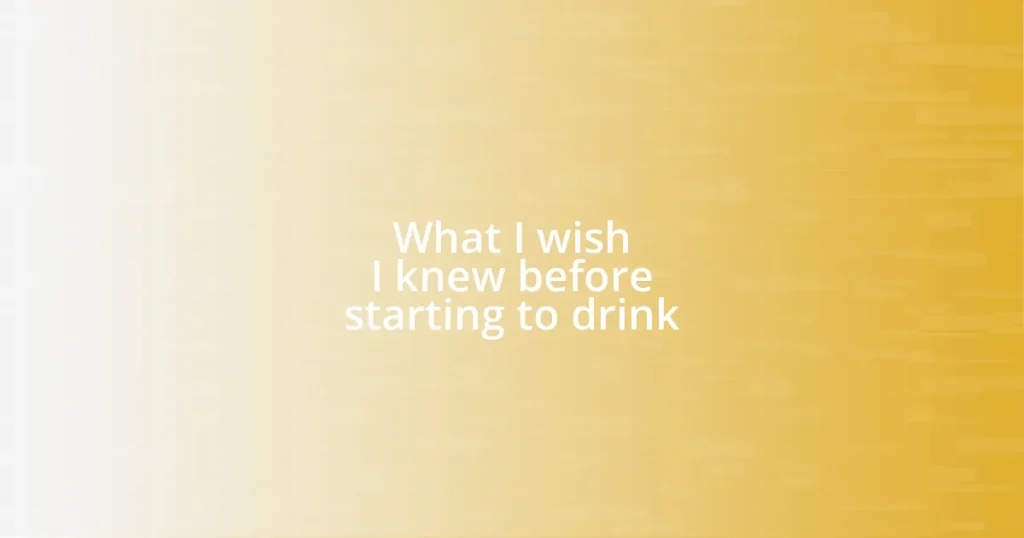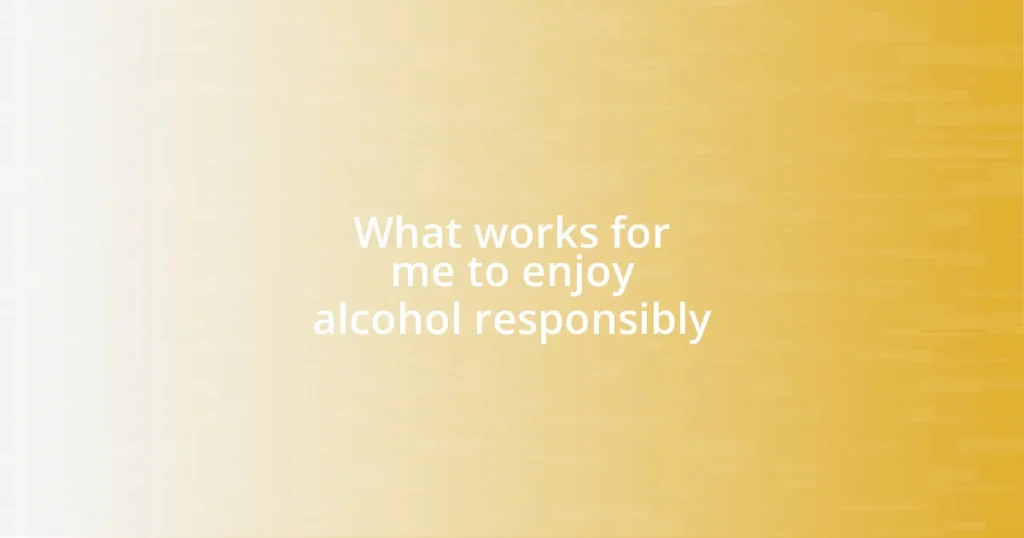Key takeaways:
- Public health initiatives rely on community engagement, fostering trust and ownership to address specific health needs effectively.
- Effective implementation requires clear objectives, collaboration among stakeholders, and adaptability based on feedback.
- Measuring success involves a multi-faceted approach, celebrating small milestones to motivate stakeholders and reinforce community involvement.
- Overcoming challenges such as community resistance and resource limitations requires creativity and collaboration to ensure inclusive access to health services.

Understanding public health initiatives
Public health initiatives are critical strategies aimed at improving the health of communities. I remember the excitement I felt participating in a local vaccination drive; seeing people come together for a cause that could save lives was truly inspiring. Isn’t it fascinating how collective efforts can spark change in our environment?
These initiatives often tackle pressing health issues, such as disease prevention, health education, and access to care. I’ve witnessed firsthand the impact of health education campaigns in schools; they can genuinely shape children’s understanding of healthy choices. Isn’t it amazing how early education can lead to lifelong habits?
Fundamentally, public health initiatives rely on collaboration among various sectors—government, healthcare, and community organizations. I often think about the complexities involved when I see different groups come together with a common goal. It’s a powerful reminder that we are all in this together, striving for a healthier future.

Importance of community engagement
Engaging the community is vital for the success of public health initiatives. I’ve often observed how local leaders and volunteers rally to involve residents, creating an environment where health discussions flourish. One memorable experience was at a town hall meeting focused on improving mental health services; the energy in the room was palpable, and it was clear that everyone felt invested in the outcome. This kind of participation fosters ownership and helps address the specific needs of the community.
The benefits of community engagement in public health can be summarized as follows:
- Builds trust between health officials and residents, leading to more effective communication.
- Encourages diverse perspectives, ensuring that initiatives are relevant and culturally sensitive.
- Empowers individuals to take an active role in their health, promoting healthier lifestyle choices.
- Facilitates resource sharing, maximizing the impact of limited public health funds.
- Enhances the sustainability of health programs through community buy-in and ongoing support.

Strategies for effective implementation
Effective implementation of public health initiatives requires strategic planning and execution. Drawing from my experiences, I’ve noticed that establishing clear objectives at the outset can significantly guide efforts. For example, during a recent health fair, having defined goals helped the team focus on what really mattered—providing screenings and education to the attendees. I believe having a roadmap is akin to setting the GPS on a trip; it directs you to your destination without unnecessary detours.
Collaboration plays a fundamental role in this process. In one project I was part of, we partnered with local businesses to promote health awareness. Each partner brought unique insights and resources, leading to a more comprehensive approach. This reminded me that, much like in any team sport, success relies on every player’s contribution.
Finally, adapting to feedback is essential. I recall a wellness program that initially didn’t resonate with the target audience. After collecting feedback through surveys, we restructured the content to better meet the community’s needs. I found it gratifying to see attendance double after we made those adjustments. Implementing public health initiatives isn’t a rigid formula; it should be dynamic and responsive to the community’s voice.
| Strategy | Description |
|---|---|
| Clear Objectives | Define specific goals to provide direction and purpose. |
| Collaboration | Engage different stakeholders for diverse resources and insights. |
| Adaptability | Regularly seek feedback to make necessary adjustments for effectiveness. |

Measuring health initiative success
Measuring the success of health initiatives is something I find both fascinating and essential. Often, I wonder how we can truly gauge the impact of our efforts. For instance, during a nutrition program I facilitated, we tracked changes not only in participants’ weight but also in their dietary habits. Observing someone enthusiastically swapping out sugary snacks for fruit was a small victory that spoke volumes about engagement and behavior change.
I’ve learned that a multi-faceted approach works best when assessing success. For example, in a community vaccination drive, we utilized surveys, attendance records, and follow-up interviews to gather comprehensive data. Each method shed light on different aspects of the initiative—some revealed logistical challenges, while others highlighted positive experiences. That realization helped me understand that no single metric can provide the full picture; it’s about combining various pieces to create a narrative of progress.
Reflecting on these experiences, I believe it’s crucial to celebrate small milestones along the way. I remember the excitement in our team when we exceeded our initial vaccination target by 20%. Celebrating these wins not only boosts morale but also reinforces the importance of our work to the community. So, how do you define success in your public health initiatives? I’ve soon realized that success is often a journey, filled with learning and growth, rather than a definitive endpoint.

Overcoming challenges in public health
One major challenge in public health is overcoming community resistance. I remember leading a mental health awareness campaign where we faced pushback from some community members who were skeptical of discussing mental health openly. It was tough, but I found that holding small, informal discussions made a world of difference. By creating a safe space for dialogue, we gradually broke down barriers and built trust, allowing more individuals to share their personal experiences and concerns. Have you ever faced similar resistance in your projects? It often feels disheartening, but persistence and empathy can pave the way for positive change.
Resource limitations can also hinder effective public health initiatives. During a childhood obesity project I participated in, we originally planned to implement a comprehensive series of workshops but discovered we didn’t have the budget for all the materials. Instead of feeling defeated, we shifted our strategy. By leveraging community volunteers to run workshops and utilizing free online resources, we maintained our mission without breaking the bank. Isn’t it interesting how a little creativity can often lead to just as impactful solutions?
Lastly, addressing disparities in health access is something that continuously challenges public health efforts. While working on a vaccination initiative in an underserved area, I soon realized the barriers were more complex than just vaccine availability—transportation, language, and socioeconomic factors all played vital roles. This experience prompted me to engage with local leaders and explore solutions together, from providing transportation services to offering multilingual resources. It felt rewarding to witness families come together for their children’s health, illustrating how collaboration can truly bridge gaps. What steps are you taking to ensure inclusive access in your work?

Future trends in health initiatives
As I look to the horizon of public health initiatives, technology stands out prominently. I once collaborated on an initiative that integrated telehealth services for chronic disease management. The immediate feedback was astounding—participants told me that being able to consult healthcare providers from the comfort of their homes significantly reduced their anxiety. Can you imagine the shift in accessibility this creates? It’s a game changer for individuals who might otherwise avoid in-person visits due to distance or stigma.
Another trend I anticipate is the increasing emphasis on mental health. I remember attending a community health fair where mental health resources were combined with physical health screenings. The turnout exceeded our expectations. Seeing people not just seek advice on their physical well-being but also step forward for mental health support really emphasized its crucial role. Are we finally ready to break down the walls around mental health? From my perspective, integrating these conversations into routine health checks could fundamentally alter how care is delivered.
Finally, sustainability in health initiatives is becoming more vital than ever. Working on a project to promote local food systems, we partnered with farmers markets to create awareness about healthy eating. It struck me how community-driven solutions not only promote better health but also foster local economies. Isn’t it inspiring to think of health initiatives as part of a broader ecosystem? As we continue to evolve, my hope is that we prioritize sustainability in all aspects of public health, creating a model that lasts for generations.















